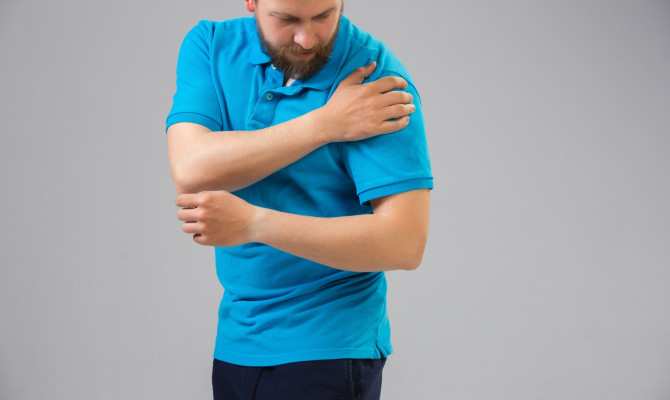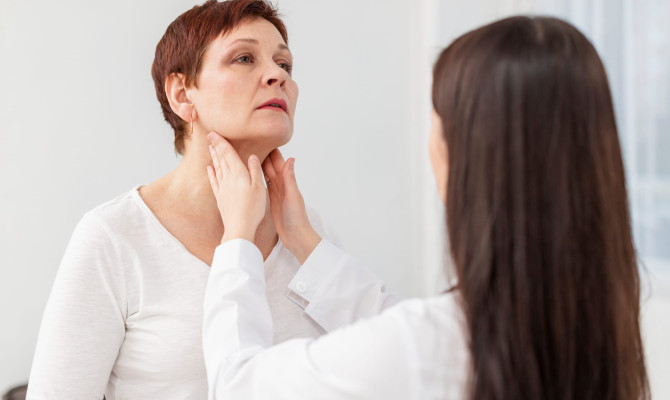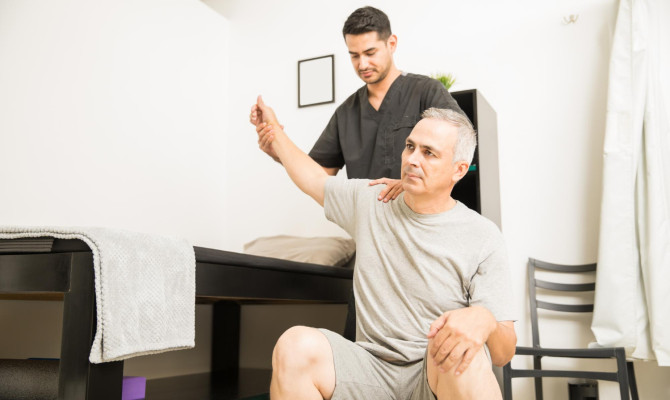COPD : Understanding and Management

- COPD
- 14 Aug 2023
Overview
What is COPD?
Chronic obstructive pulmonary disease (COPD) refers to illnesses that impair breathing and block the airway. Emphysema and Chronic bronchitis are two forms of COPD. Emphysema most frequently describes the damage to the small air pockets at the very end of the lungs’ airways. The term “chronic bronchitis” describes an ongoing cough that produces phlegm as a consequence of airway inflammation. Coughing, wheezing, and breathing difficulties are common symptoms of both COPD and asthma, and some individuals might be suffering from both conditions.
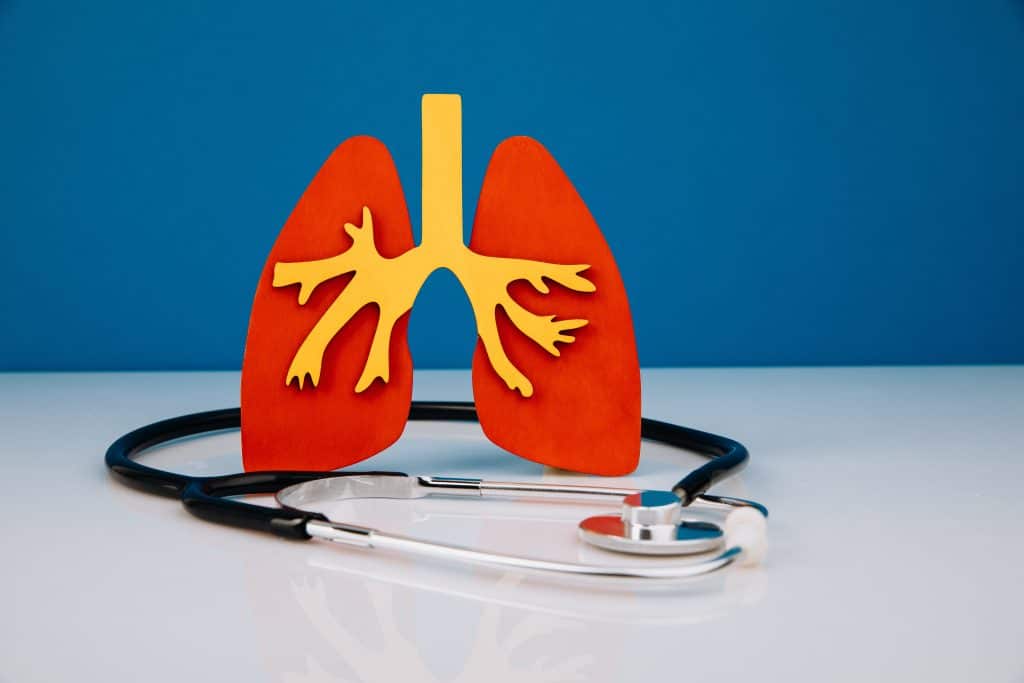
Causes
Causes of COPD
The following may contribute to COPD:
- Smoking tobacco – is the primary factor in most COPD cases.
- Deficiency of alpha-1 antitrypsin (AAT) caused by a rare genetic disease.
- Exposure to secondhand smoke from being near a smoker or in a smoking zone. 1Causes | Researched based study from Nlm.nih.gov
- The burning of biofuels like coal, wood, or animal dung for cooking indoors with inadequate ventilation.
- Exposure at work to dust, chemicals, and toxic fume.
- Early life occurrences like premature birth, respiratory infections in children, and poor fetal growth that limits lung development.
Symptoms
Symptoms of COPD
The following are possible COPD signs and symptoms: 1Symptoms | Researched based study from Nlm.nih.gov
- Prolonged Coughing.
- Production of mucous, sputum, or phlegm.
- Breathing difficulties even with light work.
- Difficulty taking long breaths.
- Tightness in the chest.
- Wheezing.
- Weight loss.
Other observations in COPD patients: 1Symptoms | Researched based study from Nlm.nih.gov
- Muscle wastage.
- Prolonged exhalation.
- Breathing with the lips pursed.
- Clubbed fingers.
- Swelling of legs/feet.
- Increasing anterior-posterior chest wall thickness (barrel chest).
- Central cyanosis caused by insufficient oxygen.
Risk
What are the risk factors ?
COPD could have a variety of risk factors, including:
- Genetic factor – Alpha-1 antitrypsin (AAT) deficient individuals are more vulnerable, particularly if they smoke or are exposed to fumes or dust for an extended period. This also causes a greater chance for COPD to manifest at a younger age.
- Family history – People who have COPD in any of the blood relatives, may be at a greater risk to get the condition, particularly if they smoke.
- Early life events – lung diseases in babies that are still in the womb or early childhood may raise the risk.
- Age – Age may be a factor, if an individual has additional risk factors for COPD, such as smoking. Most COPD patients start experiencing symptoms when they are over forty years of age. 2Risk factors | Researched based study from Nhlbi.nih.gov
- Gender – Women who smoke are likely to develop COPD at earlier ages and with a lesser amount of smoking than men do. 3Risk factors| Researched based study from Cdc.gov Also, women are typically diagnosed later than men, at a stage of the disease where treatment is less successful.
- Smoking habits – the most important contributory factor for COPD. Most individuals with COPD smoke or have smoked in the past.
- Workplace risk – to some lung irritants, such as cereal or cloth dust, or chemical fumes.
- Other respiratory disease – may raise the risk. Examples include allergies, asthma, cystic fibrosis, bronchiectasis, and more.
- A long-term condition – such as emphysema or chronic bronchitis, may make someone more susceptible.
- Environmental component – Prolonged exposure to airborne pollutants like smoke, dust, or chemical vapors. Being around individuals who smoke or are near a smoke area.
- Infections – Diseases like HIV and TB can make someone more susceptible.
Prevention
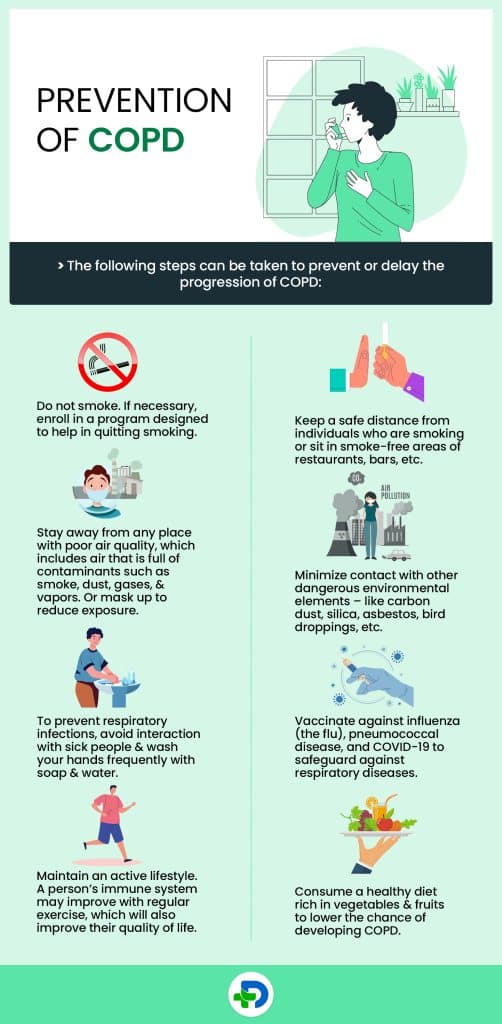
Prevention of COPD
The following steps can be taken to prevent or delay the progression of COPD:
- Do not smoke. If necessary, enroll in a program designed to help in quitting smoking.
- Keep a safe distance from individuals who are smoking or sit in smoke-free areas of restaurants, bars, etc. to reduce exposure to secondhand smoke.
- Stay away from any place with poor air quality, which includes air that is full of contaminants such as smoke, dust, gases, and vapors. Or mask up to reduce exposure.
- Minimize contact with other dangerous environmental elements – like carbon dust, silica, asbestos, bird droppings, etc. 4Prevention | Researched based study from Nlm.nih.gov
- To prevent respiratory infections, avoid interaction with sick people and wash your hands frequently with soap and water.
- Vaccinate against influenza (the flu), pneumococcal disease, and COVID-19 to safeguard against respiratory diseases.
- Maintain an active lifestyle. A person’s immune system may improve with regular exercise, which will also improve their quality of life. 4Prevention | Researched based study from Nlm.nih.gov
- Consume a healthy diet rich in vegetables and fruits to lower the chance of developing COPD. 5Prevention | Researched based study from Bmj.com
Complications
Complications associated with COPD
The following are possible medical complications of COPD:
- Weight loss with muscle wastage.
- Brittle bones/ osteoporosis.
- Depression and memory loss.
- Sleeplessness.
- Lung infections like pneumonia.
- Pulmonary hypertension.
- Respiratory failure.
- Increased blood pressure.
- Right-sided heart failure.
- Bacterial/ Viral/ fungal infections.
- Lung cancer.
COPD may have the following effects on daily life:
- Decreased quality of life caused by exercise restrictions that prevent employment.
- Not being able to take part in social activities such as going out to dine, participating in group activities, etc.
- Might need to rely on transportable oxygen canisters.
- More confusion and forgetfulness.
Diagnosis
Diagnosis of COPD
To diagnose COPD, the doctor may record a detailed medical history, a personal history of smoking and other habits, a family history, a physical examination, and some tests like the following:
Physical examination
- Pulse and blood pressure may be checked.
- Inspect the patient’s nostrils, throat, and mouth.
- Check for swelling in the feet and ankles.
- Using a stethoscope, the doctor might check the heart and the lungs.
Lab Tests may include
- Spirometry – A quick procedure to assess lung capacity and find COPD in anyone experiencing breathing difficulties.
- Pulse oximetry – Oxygen level in a person’s blood is measured.
- Exercise testing – to find out if the physical activity causes a decline in blood oxygen levels.
- Arterial blood gas (ABGs) – tests the amounts of oxygen and carbon dioxide in the blood.
- Electrocardiogram (ECG or EKG) – evaluates a person’s heart and rules out cardiac conditions as the source of breathlessness.
- Other imaging tests – like Chest X-rays and chest CT scans may be done to check for lung changes in COPD.
Management
Management of COPD
Management of COPD may include the following:
- Tobacco deaddiction – For smokers, quitting smoking is the most crucial component of treatment.
- Pulmonary rehabilitation – a specialized plan of care that teaches patients some management techniques to enhance their quality of life. It teaches patients how to breathe more effectively and preserve energy.7Management | Researched based study from Who.int
- Supplemental oxygen – If a person’s blood oxygen level is insufficient, they may require an oxygen tank that is portable to raise their levels.
Medications
- Bronchodilators – improve breathing by relaxing the airways. When the airways are open, mucus moves more readily and can thus be coughed up more easily. 7Management | Researched based study from Who.int
- Anti-inflammatory drugs – decreases lung inflammation by taking steroids as a pill or through inhalation.
- Leukotriene modifiers – aid in improving airflow and easing symptoms for some individuals.
- Expectorants – aid in easier coughing by thinning the mucus in the lungs.
- Antihistamines – relieves runny noses, watery eyes, and congestion.
- Antivirals – used to treat viruses-related illnesses, most commonly influenza. (The flu). People with COPD are especially vulnerable to influenza.
- Antibiotics – used to treat bacterial lung infections in COPD patients.
- Vaccinations – are crucial for preventing infections like the flu, pneumonia, COVID-19, etc. as they are more dangerous to patients with COPD.7Management | Researched based study from Who.int
Surgical options
Usually considered at an advanced stage of COPD and may include:
- Bullectomy – removes single or multiple bullae of the lungs. Numerous destroyed alveoli, or air sacs, in the lungs combine to create bullae, which are large, damaged air sacs.6Management | Researched based study from Nlm.nih.gov
- Lung volume reduction surgery (LVRS) – involves either removing or decreasing the size of the lungs’ damaged areas. The lungs will become smaller as a result, but the healthy portion of the lungs will be able to function better and oxygenate the blood more effectively. 6Management | Researched based study from Nlm.nih.gov
- Lung transplant surgery – is only a last resort for management if all other measures have failed and the patient has no other severe illnesses. It carries its dangers. 6Management | Researched based study from Nlm.nih.gov
Prognosis
Prognosis of COPD
COPD advances at a different pace for each individual. Both prevention of COPD and the management of the disease depend on reducing tobacco smoke exposure. 7Prognosis | Researched based study from Who.int Some individuals with COPD continue to live long lives. But others may pass away developing serious complications. The prognosis or outcome of COPD relies on early diagnosis, management, how well an individual cooperates and responds to treatment, and the general health of the individual. Once COPD has advanced, it is impossible to reverse the lung damage, but the physician may manage the symptoms to make the patient feel better by leading a healthy lifestyle.
Any feedback on this article?
 This Articles content was accurate
This Articles content was accurate Very Informative Article
Very Informative Article I have a question or a comment
I have a question or a comment
 This article contains inaccurate content
This article contains inaccurate content This article was not helpful
This article was not helpful I have a question or a comment
I have a question or a comment
We appreciate your helpful feedback!
Checkout our social pages
References
-
National Library of Medicine
Chronic Obstructive Pulmonary Disease | Symptoms | Causes
-
National Heart, Lung, and Blood Institute
COPD | Risk factors
-
Centers for Disease Control and Prevention
Chronic Obstructive Pulmonary Disease (COPD) | Risk factors
-
National Library of Medicine
Lifestyle interventions in prevention and comprehensive management of COPD | Prevention
-
BMJ Journals
Fruit and vegetable consumption and risk of COPD: a prospective cohort study of men | Prevention
-
National Library of Medicine
Chronic obstructive pulmonary disease (COPD): Surgical procedures for the treatment of COPD | Management
-
World Health Organization
Chronic obstructive pulmonary disease (COPD) - Factsheet | Management | Prognosis












